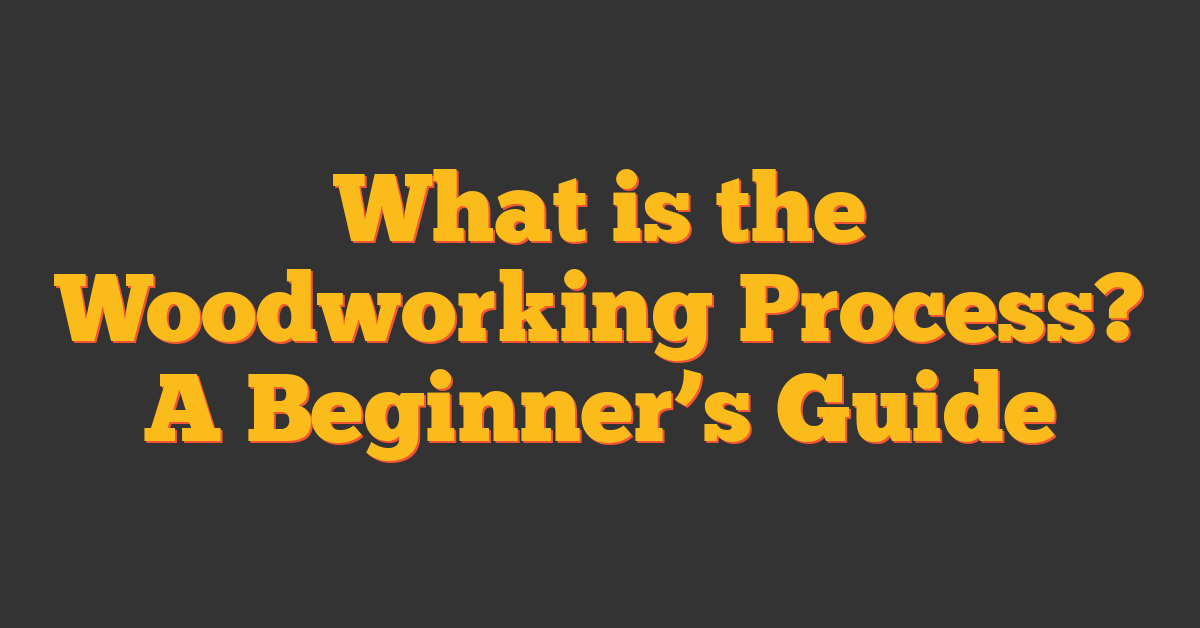If you’re interested in construction work, you may have heard the terms carpentry and masonry used interchangeably. While both trades involve building structures, they are distinct from one another in terms of the materials, tools, and techniques used. Understanding the differences between carpentry and masonry can help you determine which trade is right for you, or which one you need to hire for your next project.

Carpentry and masonry are both essential trades in the construction industry, but they differ in their focus, materials, and tools. Carpentry works primarily with wood, while masonry works with stone, brick, or concrete. Both trades require unique sets of skills and techniques, making them indispensable for different types of construction projects. Understanding the differences between carpentry and masonry can help you better appreciate the work that goes into building structures, as well as help you choose the right trade for your next project.
Key Takeaways
- Carpentry and masonry are both essential trades in the construction industry, but they differ in their focus, materials, and tools.
- Carpentry works primarily with wood, while masonry works with stone, brick, or concrete.
- Understanding the differences between carpentry and masonry can help you better appreciate the work that goes into building structures, as well as help you choose the right trade for your next project.
Fundamentals of Carpentry and Masonry
https://www.youtube.com/watch?v=2K3uiuTm2CQ&embed=true
Definition of Carpentry
Carpentry is a skilled trade that involves working with wood to construct, install, and repair structures such as buildings, furniture, and other objects. It is an art that requires precision, attention to detail, and creativity. The carpentry trade has been around for centuries and is still highly valued in the construction industry today.
Carpenters use a variety of tools to cut, shape, and join pieces of wood together. Some of the common tools used in carpentry include saws, hammers, chisels, drills, and measuring tools. Carpenters must have a good understanding of math and geometry to ensure that their structures are sound and level.
Definition of Masonry
Masonry is another skilled trade that involves working with materials such as stone, brick, and concrete to construct or repair structures. Masonry has been around for thousands of years and is still widely used today in the construction industry.
Masons use a variety of tools to cut, shape, and install materials such as brick and stone. Some of the common tools used in masonry include trowels, hammers, chisels, and levels. Masons must have a good understanding of math and geometry to ensure that their structures are sound and level.
In summary, carpentry and masonry are two skilled trades that involve working with different materials to construct or repair structures. Carpentry deals with wood, while masonry deals with materials such as stone, brick, and concrete. Both trades require a good understanding of math and geometry, as well as a variety of tools to get the job done.
Materials and Tools
https://www.youtube.com/watch?v=WwxHNi644B8&embed=true
Common Carpentry Materials
Carpentry primarily involves working with wood to build structures like furniture, houses, and other wooden structures. The most common types of wood used in carpentry are softwood and hardwood. Softwoods like pine, spruce, and fir are used for framing, while hardwoods like oak, maple, and cherry are used for furniture and decorative finishes.
Other materials commonly used in carpentry include screws, nails, glue, and adhesives. Screws and nails are used to hold wood together, while glue and adhesives are used to bond wood to other materials like metal or plastic.
Essential Masonry Materials
Masonry, on the other hand, involves working with stone, brick, mortar, and concrete to build structures like walls, foundations, and terraces. The most common types of stone used in masonry are granite, limestone, and sandstone. Bricks are made from clay, while mortar is a mixture of sand, cement, and water that is used to hold bricks and stones together.
Carpentry Tools
Carpentry requires a variety of tools, including saws, chisels, hammers, wood planes, and drills. Saws are used to cut wood to size and shape, while chisels are used to carve and shape wood. Hammers are used to drive nails and screws into wood, while wood planes are used to smooth and shape wood surfaces. Drills are used to make holes in wood for screws, dowels, and other fasteners.
Masonry Tools
Masonry tools include trowels, chisels, hammers, and levels. Trowels are used to spread mortar and concrete, while chisels and hammers are used to shape and cut stone and brick. Levels are used to ensure that walls and other structures are level and plumb.
Overall, carpentry and masonry require different materials and tools, but both trades require skill and precision to create beautiful and functional structures. Whether you’re building a house or a piece of furniture, it’s important to choose the right materials and tools for the job to ensure a successful outcome.
Techniques and Construction Processes

Carpentry Techniques
Carpentry involves numerous techniques, from cutting and joining wood to crafting and installing wooden structures. Some of the most common carpentry techniques include framing, which involves constructing the basic framework of a structure, and finishing, which involves adding the final touches to a structure, such as trim and molding.
Carpenters use a wide range of tools, including saws, chisels, hammers, and drills, to construct and install wooden structures. The process of cutting and joining wood requires precision and attention to detail, as even the slightest mistake can result in a structure that is unstable or unsafe.
Masonry Techniques
Masonry involves laying individual units, such as bricks or stones, and binding them together with mortar to create a structure. Masons use a variety of tools, including trowels, hammers, and chisels, to shape and cut the individual units to fit together perfectly.
One of the most important aspects of masonry is ensuring that the structure is level and plumb, which requires a great deal of skill and expertise. Masons also need to be able to work with a variety of materials, including concrete, brick, and stone, to construct a wide range of structures.
Building Structures
Carpentry and masonry both involve constructing structures, but they differ in the materials and techniques they use. Carpenters primarily work with wood, while masons work with a variety of materials, including brick, stone, and concrete.
When building a structure, carpenters typically start by framing the basic structure using wood. They then add the finishing touches, such as trim and molding, to create a polished look. Masons, on the other hand, start by laying the individual units and binding them together with mortar to create a solid structure.
Overall, both carpentry and masonry require a great deal of skill and expertise to construct high-quality structures that are both functional and aesthetically pleasing.
Types of Structures and Applications
https://www.youtube.com/watch?v=ajtpmMC8wpc&embed=true
Carpentry in Building Homes
Carpentry is an essential part of building homes. It involves working with wood to create structures, such as frames for buildings and furniture. Wooden structures are commonly used in residential construction, including houses, apartments, and other types of buildings.
Carpenters are skilled in designing and constructing wooden structures that are sturdy, safe, and aesthetically pleasing. They use a variety of tools, including saws, hammers, drills, and chisels, to cut and shape wood into the desired form. They also use mathematical calculations to ensure that the structures they build are structurally sound and meet building codes.
Masonry in Commercial Projects
Masonry is a type of construction that involves using stone, brick, or concrete to create structures like walls, foundations, and retaining walls. It is commonly used in commercial construction projects, including office buildings, shopping centers, and other types of commercial structures.
Masonry structures are known for their durability, strength, and resistance to fire and weather damage. Masons use a variety of tools, including trowels, hammers, and chisels, to cut and shape the materials they work with. They also use mathematical calculations to ensure that the structures they build are structurally sound and meet building codes.
In summary, carpentry and masonry are two distinct yet interconnected disciplines that play crucial roles in shaping and transforming our physical environment. Carpentry involves working with wood to construct or repair structures, while masonry deals with constructing structures from individual units like bricks or stones bound together by mortar.
Durability, Precision, and Aesthetics

Longevity of Wood and Stone Structures
When it comes to the durability of carpentry and masonry, both have their advantages and disadvantages. Wood structures, for example, are prone to rot and insect damage, while stone structures are more resistant to these issues. However, with proper maintenance, both wood and stone structures can last for centuries.
Wood structures require periodic painting or staining to protect them from the elements. On the other hand, stone structures require minimal maintenance and can withstand harsh weather conditions. Stone structures are also fire-resistant, making them an ideal choice for areas prone to wildfires.
Aesthetic Differences in Carpentry and Masonry
Carpentry and masonry also differ in terms of aesthetics. Carpentry is known for its precision and clean lines, while masonry is often more decorative and ornate. For example, wood structures can be constructed with intricate details and patterns, while stone structures can be carved with intricate designs and sculptures.
Carpentry is often used for constructing furniture, cabinets, and other household items due to its precision and clean lines. On the other hand, masonry is often used for constructing buildings, walls, and other outdoor structures due to its durability and decorative qualities.
In summary, both carpentry and masonry have their unique advantages and disadvantages in terms of durability, precision, and aesthetics. The choice between the two depends on the specific needs of the project, as well as personal preferences.
Occupational Skills and Training
https://www.youtube.com/watch?v=VftubcYA4aE&embed=true
If you are considering a career in the skilled trades, you may be wondering what the differences are between carpentry and masonry. One of the key differences is the set of skills and training required for each profession.
Becoming a Carpenter
Carpenters work primarily with wood, so a lot of their training focuses on working with this material. Some of the skills you will need to develop as a carpenter include:
- Measuring and cutting wood accurately
- Reading blueprints and plans
- Building and installing structures like walls, roofs, and decks
- Using power tools like saws, drills, and nail guns
To become a carpenter, you can either enter an apprenticeship program or attend a trade school. Apprenticeships typically last around four years and involve both on-the-job training and classroom instruction. Trade schools, on the other hand, offer shorter programs that focus more on classroom instruction.
Becoming a Mason
Masons work with a variety of materials, including brick, stone, and concrete. Some of the skills you will need to develop as a mason include:
- Cutting and shaping materials to fit a specific design
- Laying and leveling materials to create a sturdy structure
- Reading blueprints and plans
- Using power tools like saws and drills
To become a mason, you can either enter an apprenticeship program or attend a trade school. Apprenticeships typically last around three years and involve both on-the-job training and classroom instruction. Trade schools, on the other hand, offer shorter programs that focus more on classroom instruction.
Overall, both carpentry and masonry are skilled trades that require a lot of expertise and training. Whether you choose to become a carpenter or a mason will depend on your interests and career goals.
Cultural and Historical Context
https://www.youtube.com/watch?v=XqXHZtfBOmQ&embed=true
Carpentry in History
Carpentry is a craft that has been around for thousands of years. From the ancient Egyptians to the Greeks and Romans, carpentry has played a significant role in the construction of buildings, ships, and furniture. In medieval times, carpentry was considered a prestigious profession and was often associated with the nobility.
Carpentry has a long history of being used to create art and decorative pieces. In the Gothic era, carpenters created intricate wooden carvings and sculptures for churches and cathedrals. Today, carpentry is still used to create beautiful and functional pieces of furniture and art.
Masonry and Freemasonry
Masonry is another ancient craft that has been used for centuries. Masonry involves the use of stone, brick, or concrete to construct buildings and structures. It is often associated with grand and impressive buildings such as cathedrals, castles, and monuments.
Freemasonry is a fraternal organization that has its roots in the stonemason guilds of the Middle Ages. Freemasons are known for their use of symbols and mysteries, which have been passed down through the generations. While not directly related to the craft of masonry, Freemasonry has been associated with it due to its historical ties to stonemason guilds.
Both carpentry and masonry have played important roles in the construction of buildings and structures throughout history. While they are distinct crafts, they both require a high level of skill and precision. Today, carpentry and masonry continue to be valued trades that are essential to the construction industry.




